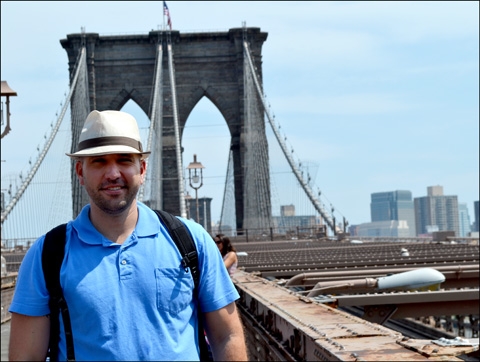Working Together to Breathe Easier
By Robert Courtnage
Since April I’ve had the privileged opportunity to work in New York City as part of EPA’s Leadership Development and Rotational Program. This temporary assignment has allowed me both the chance to work in a region where there is more direct interaction with local communities and to work in a voluntary program for the first time in my EPA career. My responsibilities here in New York City focused on addressing indoor air quality and asthma control. Both issues are inherently interrelated and are especially important in New York City. Asthma rates in parts of the Bronx and Brooklyn are some of the highest in the country. Through the work of organizations like the New York City Asthma Partnership (NYCAP), the region helps to educate New York City residents on how to properly control asthma. The two main components of asthma control are reducing exposure to asthma triggers, such as cigarette smoke and mold, and taking the right asthma medications. I was fortunate to attend a NYCAP meeting this past June to meet with community health providers and to learn about their organizations and help them promote asthma control in New York City.
Also, through a series of collaborative meetings I worked with my colleagues to encourage the integration of important indoor air and asthma concepts into related EPA programs. One example is the connection made between the indoor air quality and climate change. The Institute of Medicine at the National Academies recently released a report entitled Climate Change, the Indoor Environment and Health that discusses the link between climate change and potential decreases in indoor air quality. The report states that energy efficiency upgrades designed to help combat climate change, if done improperly, can lower ventilation rates and cause higher exposures to pollutants emitted from indoor sources. More frequent severe weather events associated with climate change, such as flooding, could also lead to increased issues with mold in homes.
My colleagues and I also established connections for future collaboration with the environmental justice and children’s health programs, among others. Children, minorities, and the poor are often disproportionally affected by indoor air quality and asthma issues.
I will miss the important outreach and education work on indoor air quality and asthma at the community level here in New York. Do you have questions about indoor air quality or asthma? Please post them!
Robert Courtnage is on a rotational assignment to EPA Region 2 in the Radiation and Indoor Branch. Robert will return in August to EPA’s Office of Chemical Safety and Pollution Prevention in Washington, DC to work on priority toxics issues.
Editor's Note: The opinions expressed in Greenversations are those of the author. They do not reflect EPA policy, endorsement, or action, and EPA does not verify the accuracy or science of the contents of the blog.
